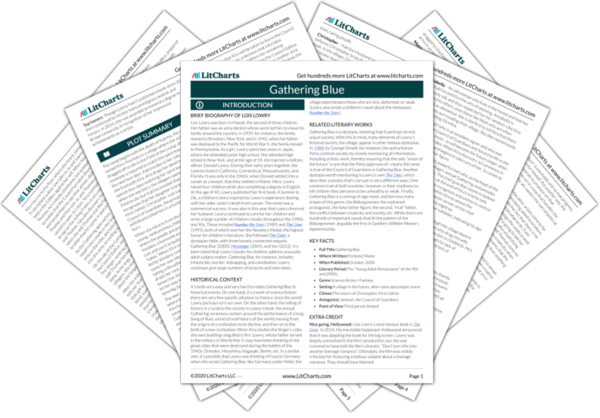Instead of paying attention to Jamison as he defends her, Kira is thinking about her cloth, and about weaving. Clearly, Kira must love weaving if she can think about it when she’s essentially on trial for her life. It’s still unclear why Kira is thinking about weaving, but suggests the importance that her weaving will play in the novel. One hint that weaving will be important is the mention of the color blue. While we don’t yet know what blue is meant to symbolize, evidently blue is important enough to make into the title of the novel.
